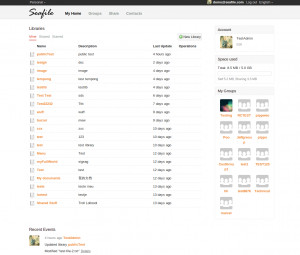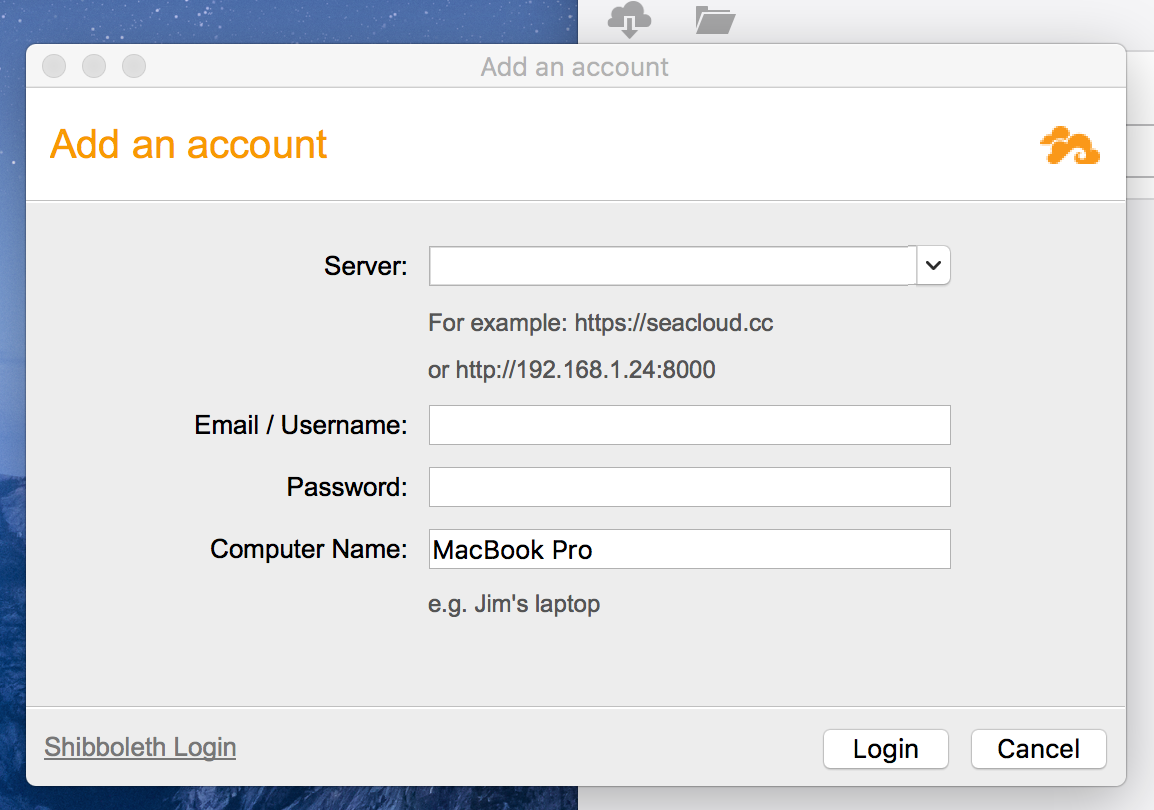The official Docker image uses multiple containers. If you need to run Seafile and related database in a single container for Synology platform, you can try the docker image provided by community: https://github.com/codeoutin/seafile7/
Dear compile-experts, I tried many hours to compile the seafile-client for mac osx. The reason for compiling myself is, that my mac is a 32bit only machine, running OSX 10.6.8, so I can't use the binaries on the seafile.com website. Seafile is a macOS application that provides file collaboration and synchronization for small teams. Team members can maintain file libraries together. Seafile brings file synchronization, which.

Server Version: 1.8 © 2013 Seafile.
Getting started¶
Install docker-compose¶
Seafile v7.x.x image uses docker-compose. You should first install the docker-compose command.
Download and modify docker-compose.yml¶
Download docker-compose.yml sample file to your host. Then modify the file according to your environment. The following fields are needed to be modified:
- The password of MySQL root (MYSQL_ROOT_PASSWORD and DB_ROOT_PASSWD)
- The volume directory of MySQL data (volumes)
- The volume directory of Seafile data (volumes).
Start Seafile server¶
Start Seafile server with the following command
Wait for a few minutes for the first time initialization, then visit http://seafile.example.com to open Seafile Web UI.
NOTE: You should run the above command in a directory with the docker-compose.yml.
More configuration options¶
Custom admin username and password¶
The default admin account is me@example.com and the password is asecret. You can use a different password by setting the container's environment variables in the docker-compose.yml:e.g.

Let's encrypt SSL certificate¶
If you set SEAFILE_SERVER_LETSENCRYPT to true, the container would request a letsencrypt-signed SSL certificate for you automatically.
e.g.
If you want to use your own SSL certificate and the volume directory of Seafile data is /opt/seafile-data:
- create a folder
/opt/seafile-data/ssl, and put your certificate and private key under the ssl directory. - Assume your site name is
seafile.example.com, then your certificate must have the nameseafile.example.com.crt, and the private key must have the nameseafile.example.com.key.
Modify Seafile server configurations¶
The config files are under shared/seafile/conf. You can modify the configurations according to Seafile manual
After modification, you need to restart the container:
Find logs¶
The Seafile logs are under shared/logs/seafile in the docker, or /opt/seafile-data/logs/seafile in the server that run the docker.
The system logs are under shared/logs/var-log, or /opt/seafile-data/logs/var-log in the server that run the docker.
Add a new admin¶
Ensure the container is running, then enter this command:
Enter the username and password according to the prompts. You now have a new admin account.
Seafile directory structure¶
/shared¶
Placeholder spot for shared volumes. You may elect to store certain persistent information outside of a container, in our case we keep various logfiles and upload directory outside. This allows you to rebuild containers easily without losing important information.
- /shared/seafile: This is the directory for seafile server configuration and data.
- /shared/logs: This is the directory for logs.
- /shared/logs/var-log: This is the directory that would be mounted as
/var/loginside the container. For example, you can find the nginx logs inshared/logs/var-log/nginx/. - /shared/logs/seafile: This is the directory that would contain the log files of seafile server processes. For example, you can find seaf-server logs in
shared/logs/seafile/seafile.log. - /shared/ssl: This is directory for certificate, which does not exist by default.
- /shared/bootstrap.conf: This file does not exist by default. You can create it by your self, and write the configuration of files similar to the
samplesfolder.
Upgrading Seafile server¶
To upgrade to latest version of seafile server:
Backup and recovery¶
Struct¶
We assume your seafile volumns path is in /opt/seafile-data. And you want to backup to /opt/seafile-backup directory.You can create a layout similar to the following in /opt/seafile-backup directory:
Borderlands 2: headhunter 1: bloody harvest crack. The data files to be backed up:
Backup¶
Steps:
- Backup the databases;
- Backup the seafile data directory;
Backup Order: Database First or Data Directory First
backing up Database:¶
Backing up Seafile library data:¶
To directly copy the whole data directory¶
Use rsync to do incremental backup¶
Recovery¶
Restore the databases:¶
Restore the seafile data:¶
Garbage collection¶

When files are deleted, the blocks comprising those files are not immediately removed as there may be other files that reference those blocks (due to the magic of deduplication). To remove them, Seafile requires a 'garbage collection' process to be run, which detects which blocks no longer used and purges them. (NOTE: for technical reasons, the GC process does not guarantee that every single orphan block will be deleted.)
Seafile For Mac
The required scripts can be found in the /scripts folder of the docker container. To perform garbage collection, simply run docker exec seafile /scripts/gc.sh. For the community edition, this process will stop the seafile server, but it is a relatively quick process and the seafile server will start automatically once the process has finished. The Professional supports an online garbage collection.
Troubleshooting¶
Seafile Mac Finder
You can run docker commands like 'docker exec' to find errors. Viscera cleanup detail download for mac.
